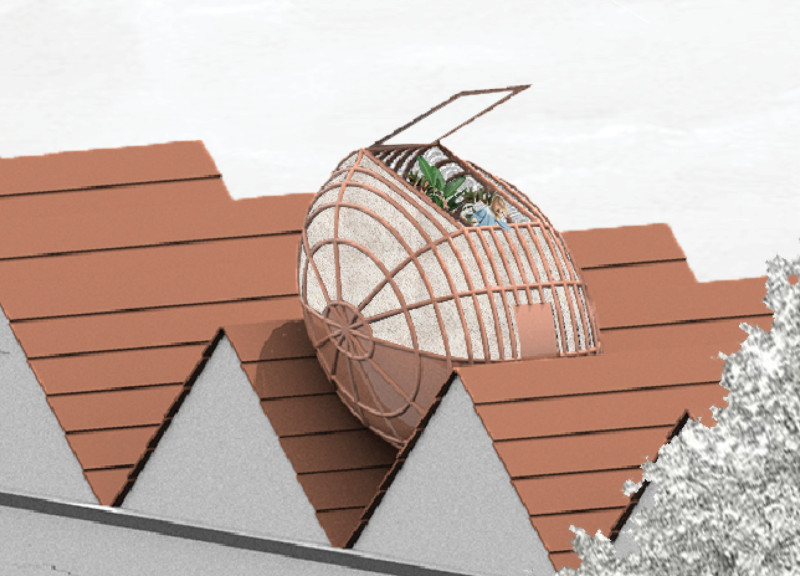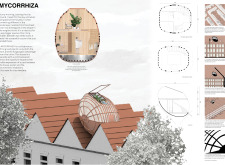5 key facts about this project
The design focuses on integrating microhomes into the urban setting of The Hague, Netherlands. It aims to tackle housing shortages while addressing issues of geographical segregation. The concept of MYCORRHIZA draws inspiration from nature, where collaboration leads to mutual benefits. The project features microhomes that are discreetly placed, enhancing the neighborhood's character while providing much-needed housing.
Design Concept
The design emphasizes the idea of symbiosis, creating a relationship between the microhomes and the surrounding environment. Located on rooftops, these homes appear like small structures situated between inclined roofs. This careful positioning helps keep them out of sight from street view while making use of space that is often overlooked.
Interior Arrangement
Inside the microhomes, the layout is thoughtfully planned. Essential living elements are incorporated into walls and floors, allowing for efficient space use. This flexibility enables residents to customize their living areas according to their preferences. The arrangement promotes a sense of individuality while also challenging traditional residential designs.
Access and Environmental Integration
Access to these homes is provided by common staircases, which helps maintain the integrity of the ground level. This design choice limits the construction's impact on the surrounding area, making it easier for residents to feel part of the larger community. The project successfully addresses urban housing challenges without altering the existing landscape significantly.
Materiality
The façade of the microhomes features mycelium, a material that connects to the project’s central theme of collaboration while highlighting sustainability. This choice not only enhances the building's performance but also reflects modern ecological approaches in design. Using mycelium as outer covering demonstrates a commitment to reducing environmental effects while providing a practical and appealing aesthetic.
The overall design emphasizes the potential for microhomes to change urban living. It offers solutions that consider both personal needs and community dynamics, promoting a new way of thinking about housing in urban areas.



















































